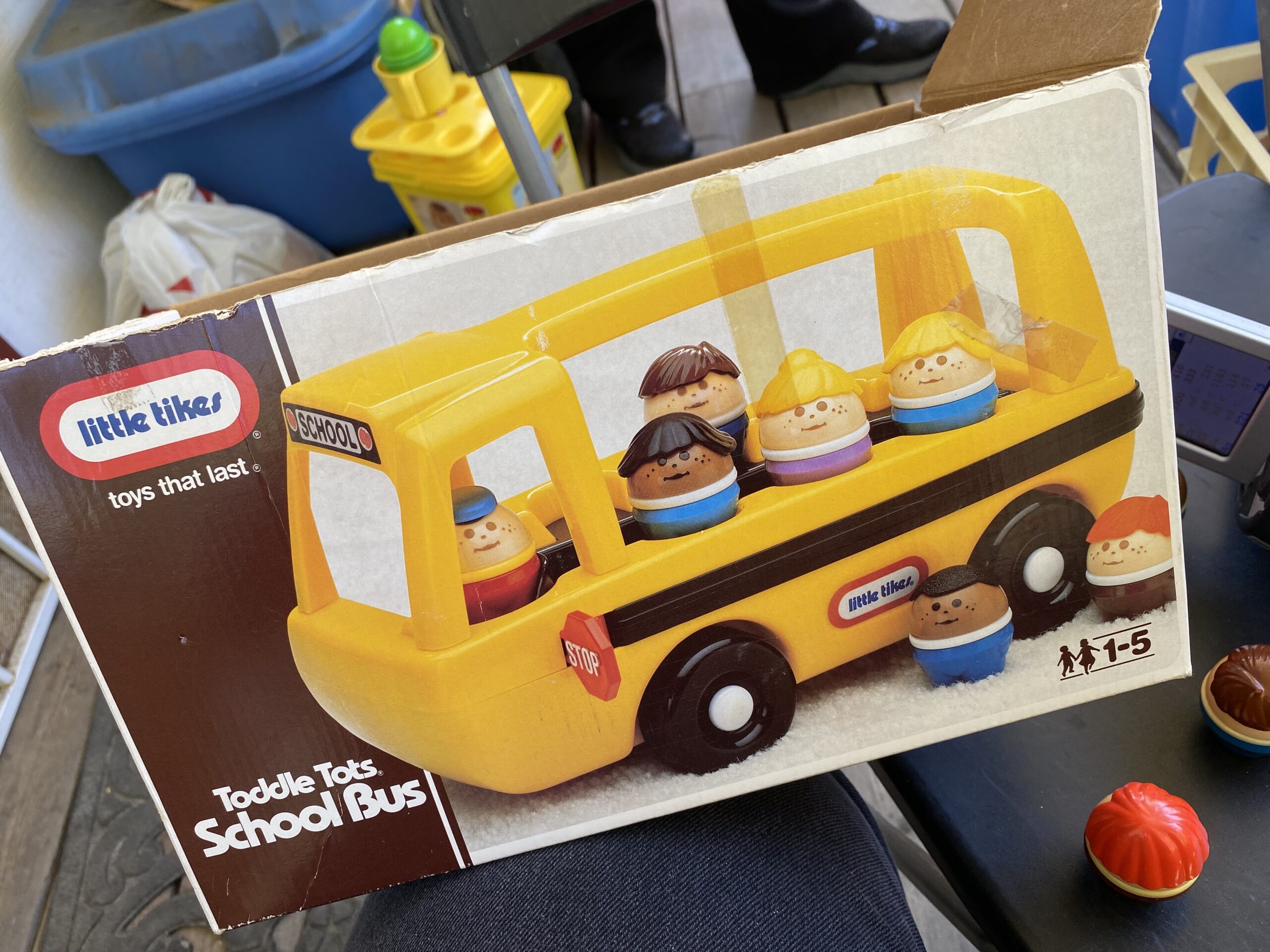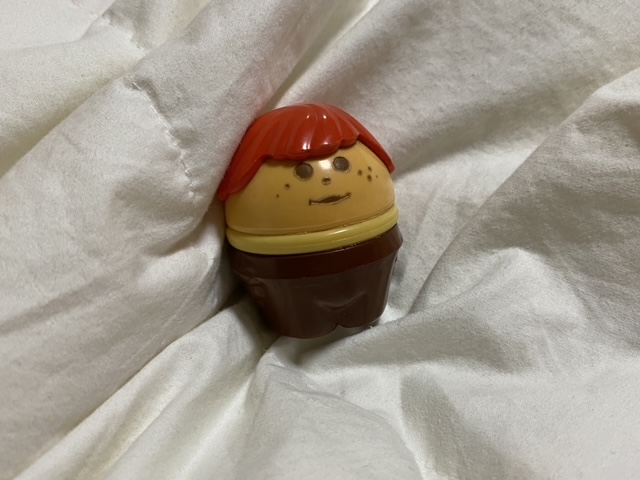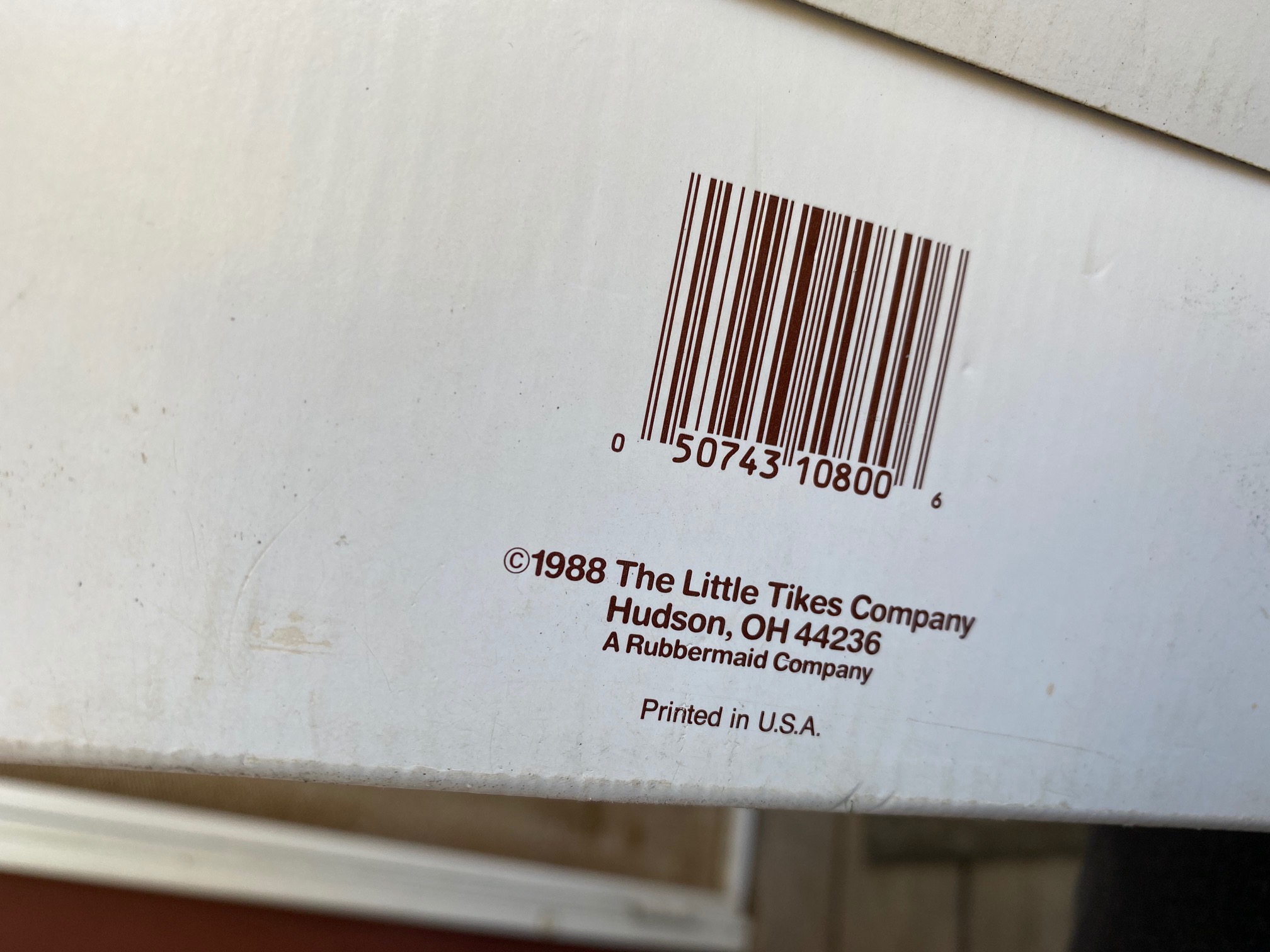Vintage 1988 Little Tikes school bus passenger doll: 1,343 ppm Lead, 6,479 ppm Cadmium & 5,037 ppm Mercury! Please read the full article.
You can see this little guy in the lower right-hand corner of the first image below.
 May 9, 2021 — Sunday
May 9, 2021 — Sunday
Introduction (for those new to this website):
Tamara Rubin is a federal-award-winning independent advocate for consumer goods safety and a documentary filmmaker. She is also a mother of Lead-poisoned children, her sons were acutely Lead-poisoned in 2005. Since 2009 Tamara has been using XRF testing (a scientific method used by the U.S. Consumer Product Safety Commission) to test consumer goods for toxicants (specifically heavy metals), including Lead, Cadmium, Mercury, Antimony, and Arsenic. All test results reported on this website are science-based, accurate, and replicable. Items are tested multiple times, to confirm the test results for each component tested. Tamara’s work was featured in Consumer Reports Magazine in February of 2023.
90 PPM Lead (or higher) is unsafe for kids
The amount of Lead that is considered unsafe for items intended for use by children and made today is anything 90 ppm Lead or higher in the paint, glaze, or coating, and anything 100 ppm Lead or higher in the substrate. These Little Tikes toys from 1988 can be far more toxic than allowable modern limits for heavy metals — and I would not consider them safe for use by children today. Most important to know for context: this toy would be illegal if manufactured today.
“But I used them when I was a kid and I am ok!”
The sentiment expressed in the above quote (or some version of it) is a common refrain, and in response, I wrote an entire article for you to share with parents or grandparents (or spouses or friends) whose lack of concern is based on that notion. Here’s a link to that article here. The fundamental guiding principle that we can all use in a situation like this is “Know Better, Do Better.” Why would you knowingly give your child a toxic toy to play with? (Especially a younger child who might put that toy in their mouth!)
“Will my child get poisoned by using this particular toy?”
Strangely, this is a complete unknown — there is no manufacturer that has a financial interest in underwriting research to quantify the potential risk of their historic/vintage/legacy products (even though these are products that were often “made to last a lifetime,” and are being handed down through generations). There have been several independent studies that demonstrate a basis for real potential concern for toxicants found in vintage plastic toys in general (without identifying specific toys and specific manufacturers of concern). Here’s a link with more information. In my educated opinion, it is simply not worth the possible risk to allow any kid to play with this category of vintage plastic toys incorporating such potentially high levels of multiple neurotoxic metals. There are plenty of modern safer choices available for kids today and they are normally quite inexpensive. Here’s an affiliate link* to a similar modern toy that is negative for Lead, Cadmium, Mercury, and Arsenic: https://amzn.to/2R54cmJ. Here’s another one that might be a good option for younger children: https://amzn.to/3bcuSso.
The specific toxicant profile for the doll pictured above
Below are the exact XRF test results for the toy pictured. Please read this article for more information about the testing methodologies used on this site. Note: you cannot do this testing yourself at home (the appropriate XRF instruments are both incredibly expensive and require training and experience to use correctly), which is why I do the testing and report it (free of charge) here on my website so parents have access to this information. If you are interested in having me test an item and report the results on the site, please read this piece (link.) If you have some of the Lead-contaminated items shown on LeadSafeMama.com, please read this post discussing what you can do with them.
#1.) 60-second reading on orange hair
- Cadmium (Cd): 6,479 +/- 204 ppm
- Mercury (Hg): 5,037 +/- 166 ppm
- Silver (Ag): 196 +/- 12 ppm
- Nb: 1,982 +/- 52 ppm
- Palladium (Pd): 162 +/- 11 ppm
- Platinum (Pt): 168 +/- 51 ppm
- Zinc (Zn): 2,829 +/- 111 ppm
- Copper (Cu): 113 +/- 34 ppm
- Indium (In): 124 +/- 14 ppm
- Vanadium (V): 892 +/- 14 ppm
- Titanium (Ti): 1,513 +/- 234 ppm
#2.) 60-second reading on the painted face
- Lead (Pb): 1,343 +/- 42 ppm
- Cadmium (Cd): 1,699 +/- 48 ppm
- Mercury (Hg): 795 +/- 46 ppm
- Chromium (Cr): 1,393 +/- 279 ppm
- Silver (Ag): 79 +/- 7 ppm
- Nb: 1,659 +/- 39 ppm
- Palladium (Pd): 60 +/- 6 ppm
- Platinum (Pt): 190 +/- 46 ppm
- Zinc (Zn): 1,559 +/- 69 ppm
- Copper (Cu): 129 +/- 31 ppm
- Iron (Fe): 416 +/- 104 ppm
- Indium (In): 80 +/- 10 ppm
- Vanadium (V): 640 +/- 300 ppm
- Titanium (Ti): 25,200 +/- 1,100 ppm
Thank you for reading and sharing this work. As always, please let me know if you have any questions and I will do my best to answer them personally as soon as I have a moment (which can take a while these days, since there have been so many questions on my site recently — paired with no childcare, as a result of the pandemic — so please be patient!).
Tamara Rubin
#LeadSafeMama
*Amazon links are affiliate links. If you purchase something after clicking on one of my links I may receive a small percentage of what you spend at no extra cost to you.
This is a photo of the bottom of the box:
Never Miss an Important Article Again!
Join our Email List











David A. It amazes me that companies like these have prosperity off the edges of the universe as they succeed in destroying life on earth! I say destroy because it goes far beyond poisoning! What is even worse is the way they DEFEND and try to conceal their wrongdoing! What are our military troops doing over seas? We need them HERE! The familiar story! Even with our water supply! Thanks DuPont!!Thanks 3M!! Have you seen Dark Waters? What really angers me is there are hundreds of formulas for non-toxic paints / materials that gather DUST in U.S. Patent office! (Industrial Hemp plant only one example: Henry Fords Hemp car and fuel )I am flabbergasted at the stupidity of those with the money and those in charge! They knowingly allow us to drink poison, eat poison off more poison, play with poison, breath poison etc! Someone doesn’t like us very much, don’t you think?
Did you test the bus? Any other hard plastic little yikes toys tested?
Have you tested the little tikes doll house with the blue roof, two story? Or the pink roofed two story grandma house? Accessories?
Send me photos – tamaraRubin@mac.com
Anyone know if this one has lead? My MIL saved it for my kids.